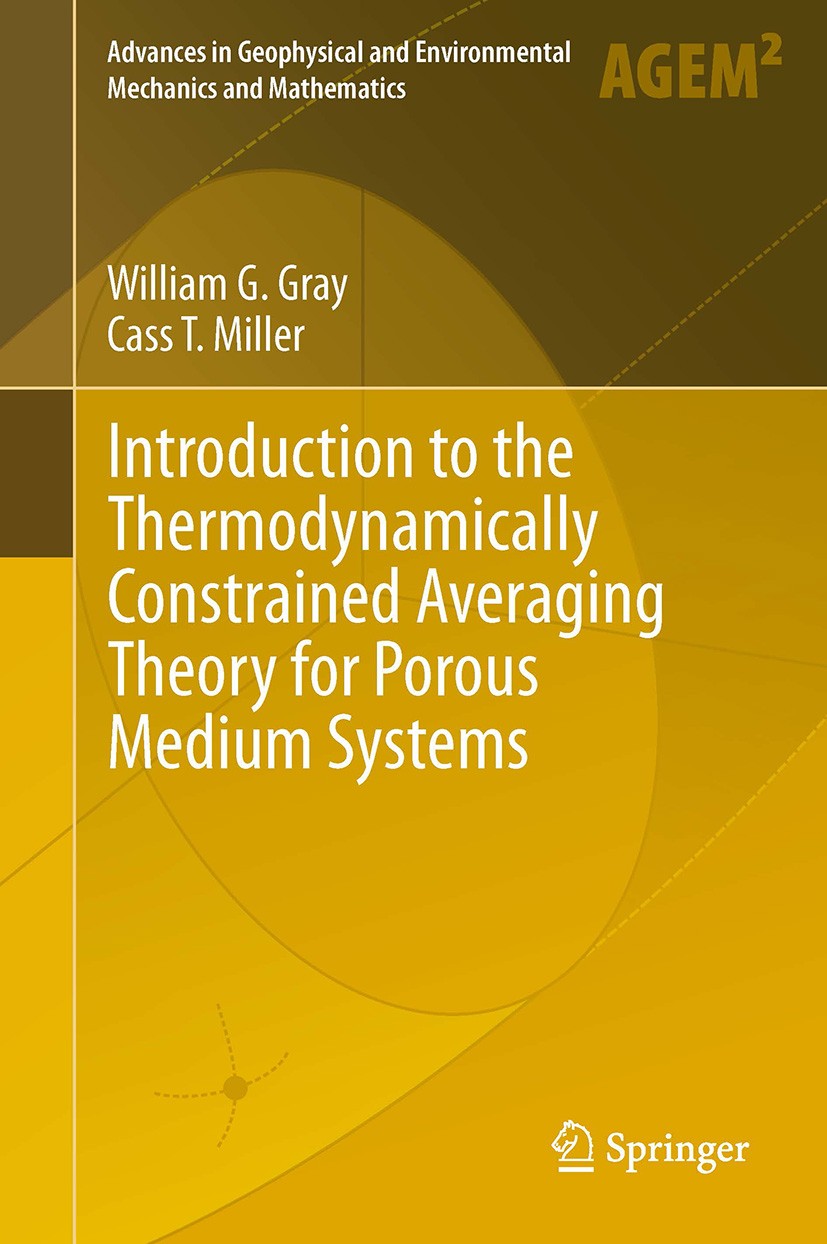| 书目名称 | Introduction to the Thermodynamically Constrained Averaging Theory for Porous Medium Systems |
| 编辑 | William G. Gray,Cass T. Miller |
| 视频video | http://file.papertrans.cn/475/474439/474439.mp4 |
| 概述 | Self-contained introduction to the derivation of conservation, thermodynamic, and evolution equations for modeling multiphase porous media systems.Formulates entropy inequalities that can be used to g |
| 丛书名称 | Advances in Geophysical and Environmental Mechanics and Mathematics |
| 图书封面 |  |
| 描述 | Thermodynamically constrained averaging theory provides a consistent method for upscaling conservation and thermodynamic equations for application in the study of porous medium systems. The method provides dynamic equations for phases, interfaces, and common curves that are closely based on insights from the entropy inequality. All larger scale variables in the equations are explicitly defined in terms of their microscale precursors, facilitating the determination of important parameters and macroscale state equations based on microscale experimental and computational analysis. The method requires that all assumptions that lead to a particular equation form be explicitly indicated, a restriction which is useful in ascertaining the range of applicability of a model as well as potential sources of error and opportunities to improve the analysis. |
| 出版日期 | Book 2014 |
| 关键词 | Averaging Theory; Groundwater; Multiphase Flow; Porous Media; Thermodynamics; quantitative geology |
| 版次 | 1 |
| doi | https://doi.org/10.1007/978-3-319-04010-3 |
| isbn_softcover | 978-3-319-35501-6 |
| isbn_ebook | 978-3-319-04010-3Series ISSN 1866-8348 Series E-ISSN 1866-8356 |
| issn_series | 1866-8348 |
| copyright | The Editor(s) (if applicable) and The Author(s), under exclusive license to Springer Nature Switzerl |
 |Archiver|手机版|小黑屋|
派博传思国际
( 京公网安备110108008328)
GMT+8, 2025-11-18 22:07
|Archiver|手机版|小黑屋|
派博传思国际
( 京公网安备110108008328)
GMT+8, 2025-11-18 22:07


